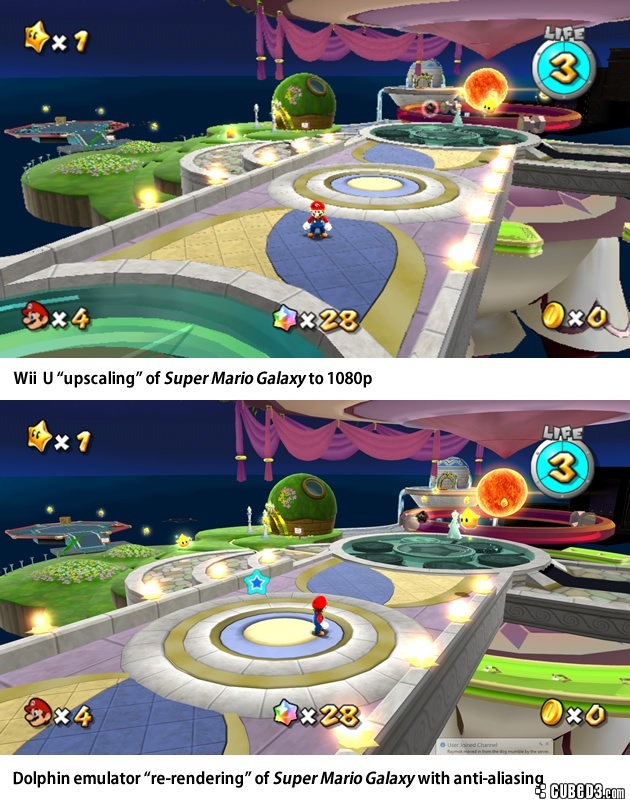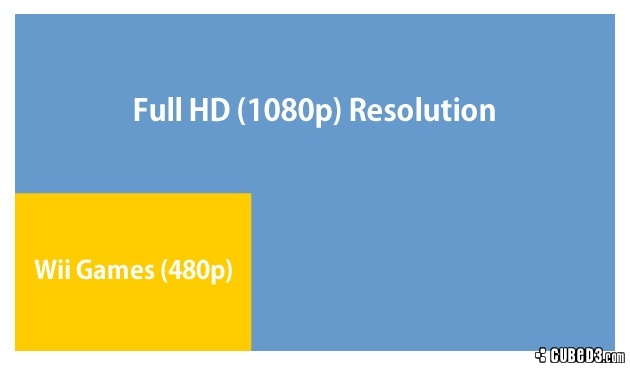There have been confusing reports this week on the Wii U video rendering Europe - does it upscale, the use of HDMI cables and all that pixels malarkey - leading to conflicting reports across the board.
The main issue spawned from the Wii mode in the PAL/European Wii U console, where options available to players on a standard Nintendo Wii aren't present in the Nintendo Wii U, such as 576i. Using components cables produces the maximum 480p image by default.
For European Wii gamers, the consensus is that certain titles, like The Legend of Zelda: Twilight Princess and virtual console games, look better and run smoother in 576i instead of 480p.
Important AV options are omitted from the Wii menu, with the PAL console unable to upscale to HD resolutions or run in progressive scan over component - an issue that doesn't seem to impact NTSC hardware.
This quote was misinterpreted by some reports this week, stating that "Wii U doesn't upscale in Europe" - this is only partially true. It does certainly run in progressive scan at 480p.
The Wii U doesn't upscale Wii games with component cables, but does upscale with HDMI cables.
The term "upscaling" shouldn't be confused with other terms like "uprender" or "re-render", however.
Regardless of which region your Wii U hails from, the actual source image of Wii games can't be re-rendered on the new console - and this is the key point to be aware of.
The below screenshot of Super Mario Galaxy (image credit Zelda Informer) shows both an upscaled image and re-rendered shot with anti-aliasing applied.

Upscaling Wii Games

Original Wii games upscaled without added effects have tended to look visually clearer though, like Super Mario Galaxy or Super Smash Bros. Brawl, but some like The Legend of Zelda: Twilight Princess do show their age more so.
Re-rendering or Up-rendering Wii Games
The terms "uprender" or "re-render" could involve the use of higher resolution textures and added anti-aliasing/smoothing to produce a visually improved image. These techniques are employed by Wii emulators, like Dolphin, to create a vastly superior image compared to the original Wii and what the Wii U can do.Redoing all the assets within a game to better suit high definition is something that simply requires a great deal of work and better suited to a re-release or dedicated team of fans.
But what the Wii U is capable of doing, in theory, is applying a small amount of anti-aliasing to create a smoother image along the lines of the Super Mario Galaxy comparison above, but Nintendo isn't doing so with Wii games at the moment.
Why do Wii Games Look Better using HDMI?

But looking specifically at Wii games in particular, using HDMI cables allow a digital signal to be transmitted from the Wii U console to the TV, where as older cables like component and composite transmit it an analogue format. Analogue has a varying rate and can degrade when the image and audio signals are zipped along the cable to the TV, where as digital is regarded as a far more consistent and practically loss-less format.
The improved signal with HDMI also has the potential to produce deeper colours, improved clarity in places which leads to a generally better picture when playing Wii games.
This is why Wii games over HDMI tend to look improved, but they are not a true HD image.
HDMI connectivity is certainly something to consider, if not insist on, when purchasing a TV/display for gaming and media playback. If the option is available, then without a doubt - HDMI cables should be used over component, and as for composite, perhaps used as decoration on a Christmas tree.
Have you tried original Wii games up-scaled on the Wii U with HDMI?

 Sign In
Sign In 09.12.2012
09.12.2012 
 JoshSL
JoshSL 
 Link to this post:
Link to this post: 
 Azuardo
Azuardo  Subscribe to this topic
Subscribe to this topic Features
Features






 Top
Top

